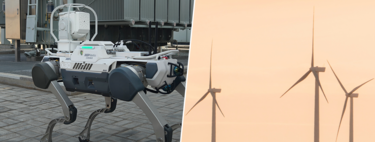The first “Olympic Games” of humanoid robots in Beijing held last month put the focus on one of China’s most aggressive technological bets. And it is that among sports exhibitions and industrial demonstrations, the Asian giant demonstrated his muscle in the creation of humanoid robots. However, we are at a point where robotics faces various problems that must be solved to count on the market with a reliable solution and worthwhile. And not everything is valid with promises.
The strategy from China. Beijing has converted humanoid robotics into state priority. Its five -year plan for the robotic industry set an annual growth of more than 20%, backed by a state fund of 140,000 million dollars for technological startups. The objective is none other than leading a sector that they consider “the next great technological revolution” after smartphones and electric vehicles. This year they expect to produce more than 10,000 humanoid robots, with cities such as Shanghai, Shenzhen and Beijing concentrating investment and development.
The perfect showcase. The recent “Olympic Games” for robots served as a demonstration of strength. One of the most prominent moments was when Unitree H1 robot completed 1,500 meters in 6 minutes and 34 seconds, reaching 4.78 m/Sy, surpassing the Atlas of Boston Dynamics. But the detail that many overlooked is the fact that these robots did not operate autonomously, but were controlled by human operators.
The blow of reality. While China exhibits records and opens “Robot Mall” in Beijing, the first 4S store for humanoids that promise in one place sales, spare parts, service and follow -up, many experts prefer to be cautious. “I don’t think anyone has found an application for humanoids that requires several thousand robots per installation,” says Melonee Wise, former product director in Agility Robotics, for IEEE. There is a real lack of demand, and that is the first obstacle to large -scale manufacture of humanoid robots.
Rpending technical etos. Energy autonomy remains another problem. Agility’s Digit robot needs 9 minutes of load for every 90 minutes of operation, and in practice it must stop every 30 minutes to maintain a safety reserve. Industrial reliability requires levels of 99.99%, far from current standards in multipurpose applications. And in terms of security, unique problems arise in this segment, since if for example we disconnect the feeding of a bípedo humanoid robot, which collapse an armatos of several tens of kilos complicates things.
And market that It still does not exist. Although signatures such as Bank of America Global Research have predicted that 18,000 units will be sold in 2025 or that the figure reaches 1,000 million robots by 2050 in a 5 billion dollar market, according to Morgan Stanley Research, the reality is that today there are hardly any real commercial deployments. Even the most advanced companies in the sector only have a handful of robots that work in very controlled pilot tests. The applications that would justify these figures are, for now, speculative.

The closest commercial launch of Europe. Faced with Chinese optimism, the European Neura Robotics also has an approach in that segment with 4NE1, a domestic robot that the firm intends to launch for about 60,000 euros and is scheduled for 2026. Its CEO speaks of “doing for robotics what the iPhone did for smartphones.” The domestic market, of course it is the one that until now could benefit from this type of robots, but an investment of that caliber is not something that anyone does.
Known companies that bet in the long term. Chinese companies such as Xiaomi and Honor already diversify towards the Segment of Humanoid Robots following the Amazon model: Lose money now to dominate later. Given a sector as saturated as that of smartphones, it is a strategy that makes all the meaning, although it requires that promises end up materializing in useful and profitable products.
Hype or revolution? China is massively investing in creating a market that still does not exist, trusting that artificial intelligence will solve the problems of autonomy, reliability and practical utility of robots. “The reality is that AI is not robust enough to meet market requirements,” says Wise. It is clear that today the ability of humanoid robots is very limited, but time will say if its evolution will end up awakening a current market.
Cover image | China Daily
In WorldOfSoftware | You cannot climb to the Madrid subway with an electric scooter. In China’s, robots are already a passenger












